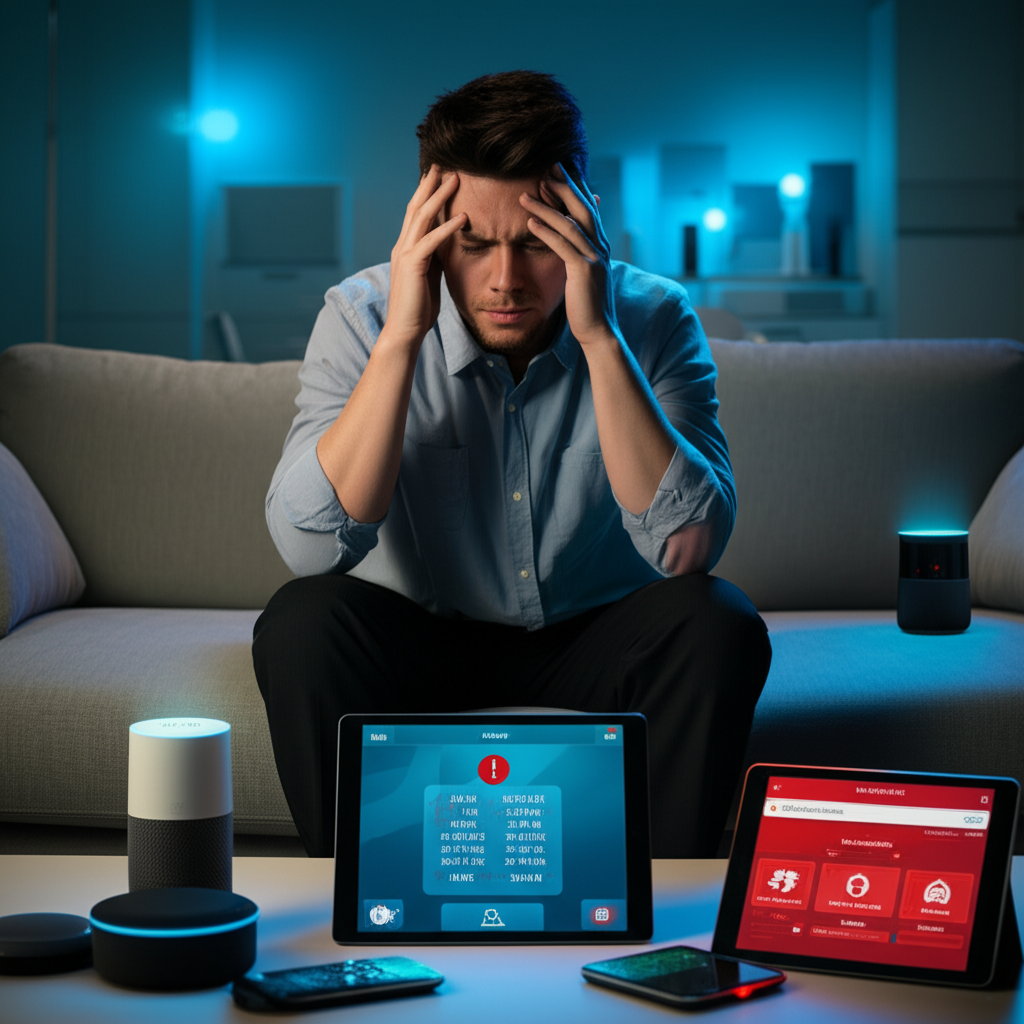Smart homes promised convenience, automation, and a futuristic lifestyle. But are you finding yourself wrestling with disconnected devices, frustrating glitches, and a home that feels more frustrating than intelligent? You're not alone. The single biggest reason smart homes fail isn't the technology itself, but a weak network infrastructure. Let's dive into why your Wi-Fi is the Achilles' heel of your smart home and, more importantly, how to fix it.
Why is My Wi-Fi Router the Biggest Culprit in Smart Home Failures?
Think of your Wi-Fi router as the central nervous system of your smart home. Every smart device, from your smart thermostat to your security cameras, relies on a stable and robust Wi-Fi connection to function properly. A weak or outdated router simply can't handle the demands of multiple devices competing for bandwidth.
What are the Symptoms of a Router Overload?
- Devices Constantly Disconnecting: This is the most obvious sign. Your smart lights might flicker, your security camera feed might drop, or your smart speaker might suddenly go silent.
- Slow Response Times: Commands take forever to execute. Adjusting the thermostat, turning on the lights, or locking the door feels like a chore.
- Inconsistent Performance: Devices work fine sometimes, but randomly fail at other times. This unpredictable behavior is incredibly frustrating.
- Reduced Internet Speed: All your devices are competing for bandwidth.
How Can I Fix My Wi-Fi and Save My Smart Home?
Don't despair! A few strategic upgrades and adjustments can dramatically improve your smart home's performance and reliability.
-
Upgrade Your Router: This is the most crucial step. Invest in a modern router that supports the latest Wi-Fi standards (Wi-Fi 6 or Wi-Fi 6E) and is specifically designed to handle a large number of connected devices. Look for features like MU-MIMO (Multi-User, Multiple Input, Multiple Output) which allows the router to communicate with multiple devices simultaneously.
-
Consider a Mesh Wi-Fi System: If you have a large home or apartment, a mesh Wi-Fi system is a game-changer. Mesh systems use multiple nodes strategically placed throughout your home to create a seamless and consistent Wi-Fi network. This eliminates dead zones and ensures that all your devices have a strong signal.
-
Optimize Router Placement: Don't hide your router in a closet or behind furniture. Place it in a central, open location, away from obstructions like walls and metal objects. Elevating the router can also improve its signal range.
-
Check Your Wi-Fi Channel: Your router uses specific channels to transmit data. If too many devices in your neighborhood are using the same channel, it can cause interference. Use a Wi-Fi analyzer app to identify the least congested channel and switch your router to that channel.
-
Prioritize Devices with QoS: Many modern routers offer Quality of Service (QoS) features. QoS allows you to prioritize certain devices or applications, ensuring that they get the bandwidth they need. For example, you might prioritize your security cameras or video streaming devices.
-
Address Zigbee and Z-Wave Range: For devices using Zigbee or Z-Wave, ensure they're not too far apart. These protocols rely on devices relaying signals, so distance matters. Add more Zigbee/Z-Wave devices or range extenders if needed.
Beyond Wi-Fi: Other Common Smart Home Problems and Solutions
While a weak network is the primary culprit, here are a few other common issues and their fixes:
- Devices Not Playing Well Together: Invest in a smart home hub (like Amazon Echo, Google Nest Hub, or Apple HomePod) to act as a central control point. Services like IFTTT (If This Then That) can also help integrate devices that don't natively work together.
- False Alarms from Security Devices: Configure "smart zones" in your security camera settings to ignore areas with frequent motion (like trees blowing in the wind). Enable features like human recognition to reduce false alerts.
- Battery Drain Issues: Ensure devices are within range of a strong Wi-Fi signal. Check device settings and disable unnecessary features to conserve battery life.
- Difficulty Controlling Devices: Choose devices with physical controls for easy access. Consider smart switches for lighting systems that are primarily controlled through apps.
Frequently Asked Questions
Why does my smart home keep disconnecting?
The most common reason is a weak or overloaded Wi-Fi network. Upgrade your router, consider a mesh Wi-Fi system, and optimize router placement.
How do I make my smart home devices work together?
Use a smart home hub like Amazon Echo, Google Nest Hub, or Apple HomePod. Also, explore services like IFTTT to create custom integrations.
What can I do about false alarms from my smart security cameras?
Configure "smart zones" to ignore areas with frequent motion and enable features like human recognition to reduce false alerts.
Take Control of Your Smart Home Today!
A frustrating smart home doesn't have to be your reality. By addressing the root cause – a weak network – and implementing the solutions outlined above, you can transform your smart home from a source of stress into the convenient and enjoyable experience it was meant to be. Start with your router, optimize your network, and rediscover the joy of a truly connected home. The future is now, and it's time to make it work for you!

